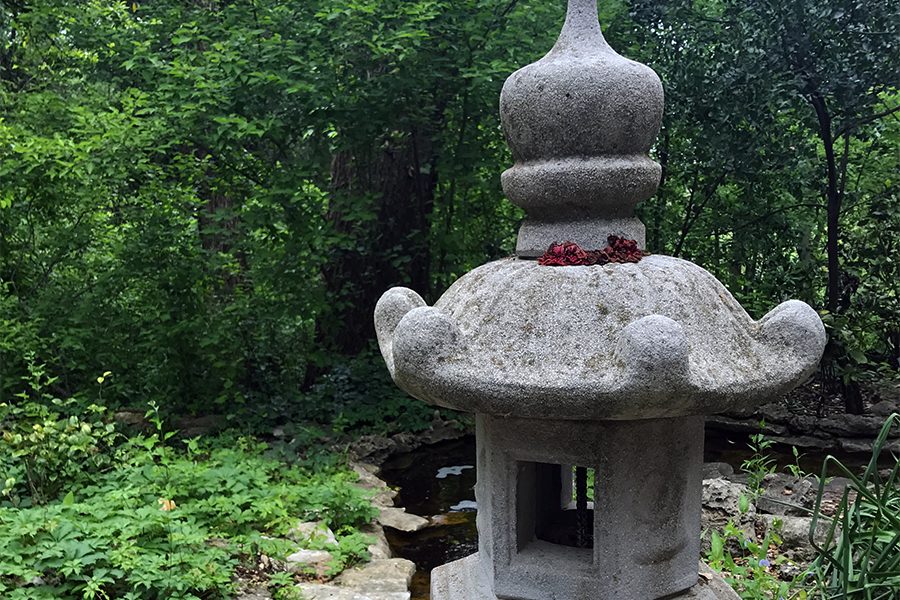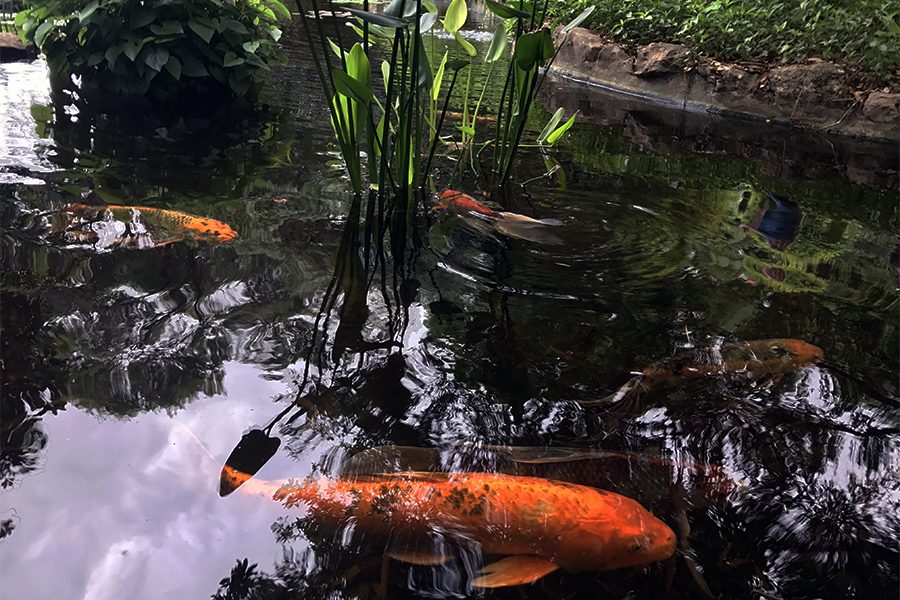Finding communion in nature
Zilker’s botanical gardens offer sanctuary
Usually, the central platform, or chudai, of the toro is used for a lantern. In some cases, guests leave coins as an offering to the garden.
April 13, 2017
Overlooking the bamboo forest in the distant fog sits the concrete jungle of downtown Austin. The worries of daily life seem to fade away under the shade of the wisteria. A quiet splash comes from the pond as the koi swim through lillies. Unbeknown to the wanderers of the botanical gardens, the pond participates in a Japanese garden custom of spelling out a word or character. In this case, it spells Austin.
No matter how small, each element of the gardens has a significance. The Japanese Garden at Zilker’s Botanical Gardens a gift from Isamu Taniguchi, a Japanese immigrant who transformed three acres of barren rock to a lush forest as a gift to Austin. He was in part inspired by the Mother Tree who “spoke” and inspired Taniguchi as he worked in the gardens. In 18 months time, when the garden was completed, Mother Tree died and “gave her spirit to the garden.” The remains of Mother Tree can be seen today near the first pool hidden next to a winding tree.
Beside the cascading waterfall of the first pond is the wooden Togetsu-kyo bridge, in English “Bridge to Walk Over the Moon.” Taniguchi designed the bridge to “reveal the ultimate universal beauty.” As one walks across, the moon is reflected upon the water and accompanies the passerby. The name and concept comes from Japanese lore: when a Kamakura emperor sailed the Kamo River at night and the moon appeared to cross a bridge.
Walking up the smoothed rock steps reveals the Ten-Wa-Jin (Heaven, Harmony, and Man) teahouse. Made from bamboo and cedar, the teahouse’s message is that men live in harmony with nature. The inside houses a plaque inscribed with an essay from Taniguchi titled “The Spirit Of The Garden.” Nearby, two stone gates introduce a newer path. Inscribed is a commemoration of the friendship between Austin and sister city Oita, Japan.
Taniguchi’s, who lived with his family in an American World War II detainment camp, garden is a testament to man and nature living together. In his own words, “It is my wish that you have pleasant communion with the spirit of the garden.”









